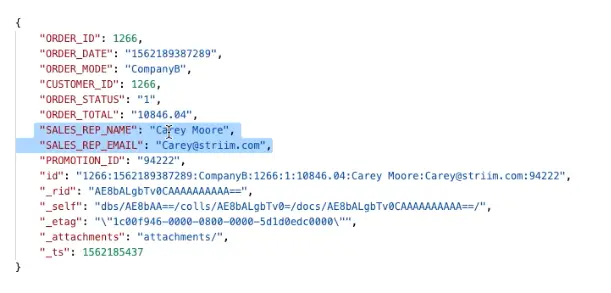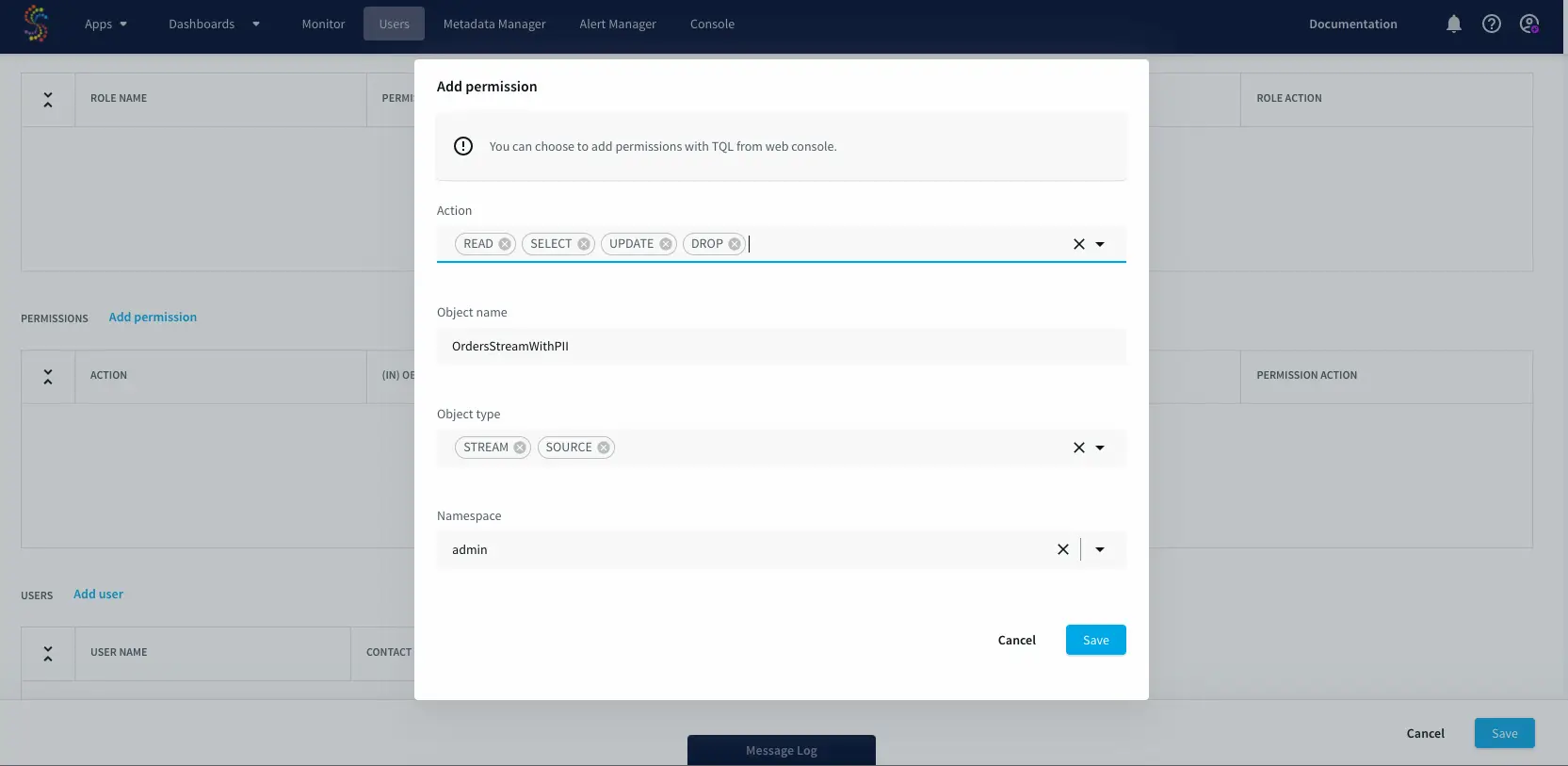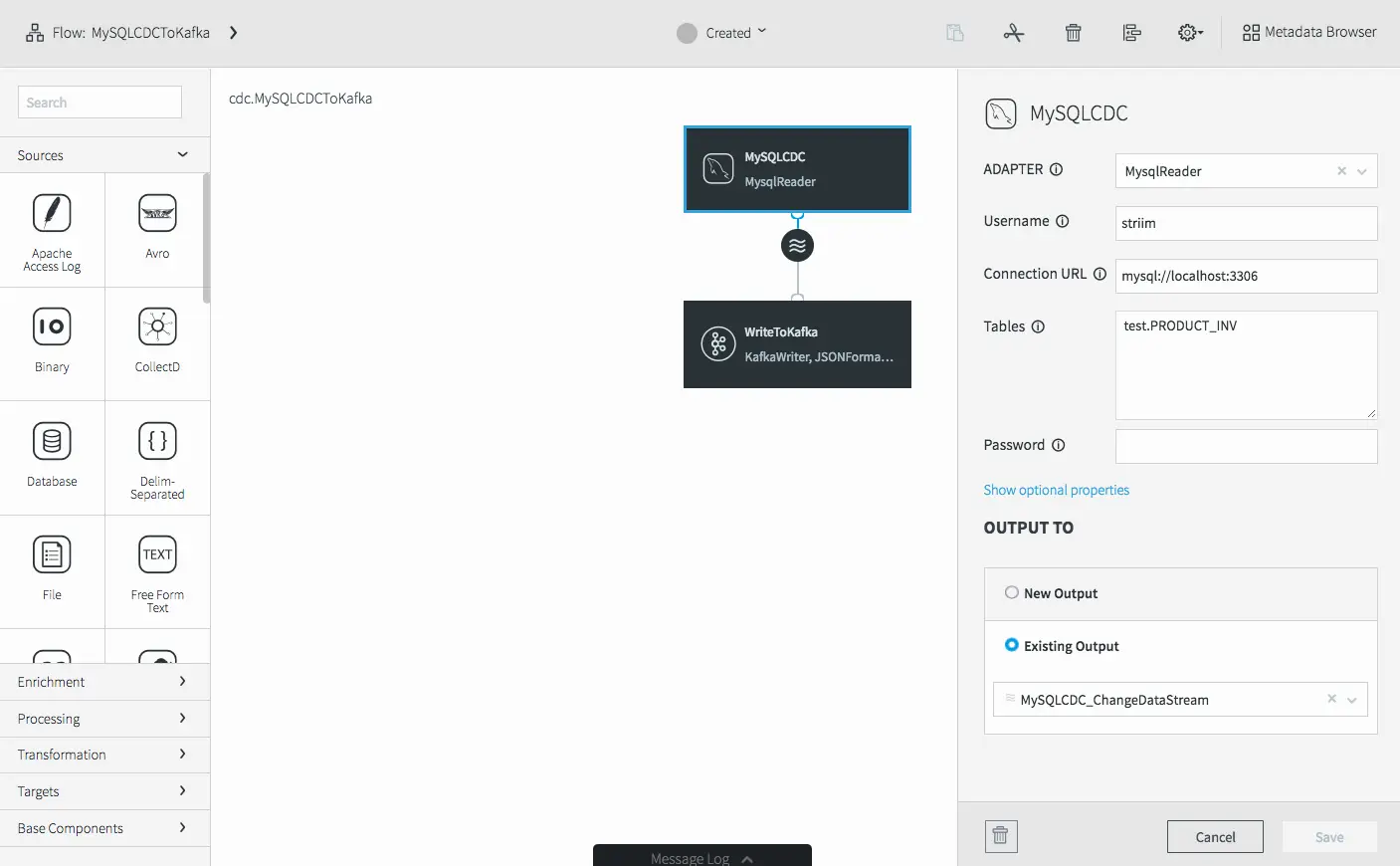Today, organizations are developing data architectures and infrastructures that use real-time streaming data, making data governance more crucial than ever. When a large amount of data has to be rapidly processed in near real-time, data in motion in the form of streaming data is an excellent option.
Governing data at rest (i.e., data stored in databases) wasn’t easy in the first place; now, organizations have to deal with a tougher challenge following the rise of data in motion (i.e., data that is moved between different sources and environments). As more and more data is streamed in real-time, managing streams spread across multiple sources and apps (e.g., databases and CRMs) takes the matter to a whole new level.
There is a gap in the data governance space. Organizations use data governance tools that are more suited for managing data at rest. However, the growing adoption of big data analytics means that managing data in motion is more crucial than ever. Striim has prioritized addressing this vacuum by introducing solutions to some of the most common data governance challenges.
- Challenge #1: Lack of visibility into your data
- Challenge #2: Loose permissions for data access
- Challenge #3: Teams share the same data implementation
- Challenge #4: Lack of security for data in motion
Challenge #1: Lack of visibility into your data
Data security is one of the major data governance challenges. But, you can only secure data that you’re aware of. That’s why a data governance team always sets a certain objective: Identify and classify the data that exists within the enterprise.
It’s common for businesses to have complex data environments that are often all over the place. Developing a framework to find data sources on a continuous basis is a tough nut to crack, and keeping data categorized is equally challenging.
Solution: Striim enables data discovery
To discover and classify your data, you have to answer a few questions, such as:
- Where is the data located?
- Who can access the data?
- How long will you keep the data?
Striim can help you resolve your data issues by bringing your streaming data into a centralized location (e.g. a data warehouse) where a data catalog solution can provide a bird’s-eye view of all the data within your organization. Furthermore, Striim allows you to enrich your data with reference data to make your data more meaningful. For example, a B2B company may use a relational database to store order information. With a normalized schema, many of the data fields are in the form of IDs, e.g. the “Orders” table may have a column for “Sales Rep ID”. Striim can add valuable context to the “Orders” data by adding sales rep names and emails (from the “SalesRep” table) to the streaming data en route to a data warehouse.

Once the data is centralized, a data catalog arranges data into an easy-to-understand format, allowing data users to use it readily. It also addresses multiple data governance issues. For example, your data catalog can connect siloed data, which can help to fix data inconsistencies and improve data quality. Or, you can use it to control data for compliance.
You can use these catalogs to store metadata and integrate it with data collaboration, management, and search tools (e.g., Tableau, Elasticsearch). This way, your users can locate and utilize relevant data instantly. It provides context to your data roles. For instance, your data scientists can use a data catalog to find and understand a dataset, which can uncover crucial insights. These can be market trends, correlations, hidden patterns, and customer preferences to help your business make informed business decisions.
And if you’re using Confluent’s streaming platform, Striim offers a seamless integration with Confluent’s schema registry and serialization layer. This enables you to stream data (from databases and other sources) into Confluent and leverage their recently-released Stream Governance features.
Challenge #2: Loose permissions for data access
Often, organizations grant extremely broad permissions to their data teams for data access. As a result, the lines between the responsibilities of data governance roles like chief data officer, data custodian, data steward, data trustee, data owner, and data user are blurred. This lack of access control can also make it difficult to minimize data privacy risks and maximize accountability.
Some organizations manage their data governance by tracking data access through access logs, but this presents its own set of challenges. That’s because each data technology comes with its own log system that stores varying information. You also need context to understand these logs, such as who accessed the data and what they did with it. This context is often stored in various tools that are incompatible with access logs. There’s a clear need for a better solution.
Solution: Striim offers role-based access control to enforce better control over data
Roles and responsibilities form the cornerstone of an effective data governance strategy. Data governance holds people accountable for performing the right set of actions at the right time. To do this, Striim can help with the definition and deployment of roles that are suited to the organizational structure and culture. This is done through role-based access control (RBAC), allowing you to control what your business users can do at both granular and broad levels.
For example, you can designate whether the user is a data custodian, data trustee, or data user and assign roles and data access permissions based on employees’ positions in your organization.
The main objective of RBAC is to provide a framework that lets organizations set and enforce access control policies for their data, which helps to streamline data governance. It grants permissions to ensure that employees receive adequate access — good enough to help them do their jobs.
With Striim, you can set roles and privileges to access all objects. An object in Striim can be many things, including sources, targets, streams, flow, and so on.
Your admins can define roles with different access levels and controls on objects, such as:
- A group of users who can create and edit any type of object.
- A group of users who can copy and read data from objects but aren’t allowed to edit them.
For example, you may have a connector that reads data with PII (‘Personal Identifiable Information’). You can create a specific permission to read the objects that contain PII and assign permission only to users with that degree of authorization.

Challenge #3: Teams share the same data implementation
A common data governance challenge is when different departments use the same application for their data-related tasks. The data team configures a data infrastructure or system that several other departments use for the collection of accurate data. However, a lack of communication can lead to an employee breaking the system.
For instance, suppose multiple teams share the same website and data analytics infrastructure. The goal of the IT team will be to use the data from analytics to fix the website’s functionality and security. On the other hand, a marketing team will be crunching the numbers to find ways to improve customer experience. Unfortunately, the difference in these team goals can lead to ongoing blunders, such as double-tagging or interrupted customer journeys.
Solution: Striim uses apps and app groups to divide workloads
You can use apps and app groups in Striim to divide workloads between teams. Striim supports data orchestration — essentially, you can use Striim’s user interface and REST APIs to automate the data in flight between your event tracking, data loader, modeling, and data integration tools.
Organizations can create a dedicated app for each business group to build a domain-specific view or transformation for analysis. That means that both your marketing and IT teams can have their own data workflows, empowering them to work more freely without one department affecting another.
For example, you can dedicate a group of Striim apps to collect streaming data from streaming databases and transfer it to a data warehouse for data analysis. Similarly, you can have a Striim app for data transformation that uses Python scripts to convert data from your sources to a standardized format.

Challenge #4: Lack of security for data in motion
Data in motion is exposed to a wide range of risks. Unlike data at rest, it travels both inside and outside the organization. These days, it’s important to protect data in motion because modern regulatory guidelines like HIPAA, GDPR, and PCI DSS enforce the protection of data in motion.
Solution: Striim offers advanced security features to protect data in motion
Striim protects data in motion with a number of security initiatives. Some of these include:
- Striim helps you to set an encryption policy to encrypt your data with encryption algorithms, such as RSA (Rivest–Shamir–Adleman), PGP (Pretty Good Privacy), and AES (Advanced Encryption Standard). This can especially come in handy in compliance-based industries (e.g., healthcare) and help protect data like PHI (protected health information) and PII (personally identifiable information).
- Striim has multi-layered application security for exporting and importing data pipeline applications. For instance, during the import of these applications, you can set a passphrase for applications that contain passwords and other encrypted values. This way, you can incorporate an additional security layer into your application security.
- Striim has a secure, centralized repository, Striim Vault, which can serve as a go-tool for storing passwords and encryption keys. Striim’s vault also integrates seamlessly with 3rd party vaults such as HashiCorp
A reliable data governance program is key to addressing your data governance challenges
The value of data governance is understated. A reliable data governance program increases the trust of people in your data analytics, business processes, and systems that power your data-driven decision-making. It offers secure access, enabling IT to successfully oversee the management of data sources and analytical content and meet policy, risk, and compliance requirements. Line-of-business employees can instantly locate the data they need and perform their jobs better.
Streamline your enterprise data governance framework with Striim. Learn more about how Striim can enhance your data governance initiatives by getting a technical demo.





















